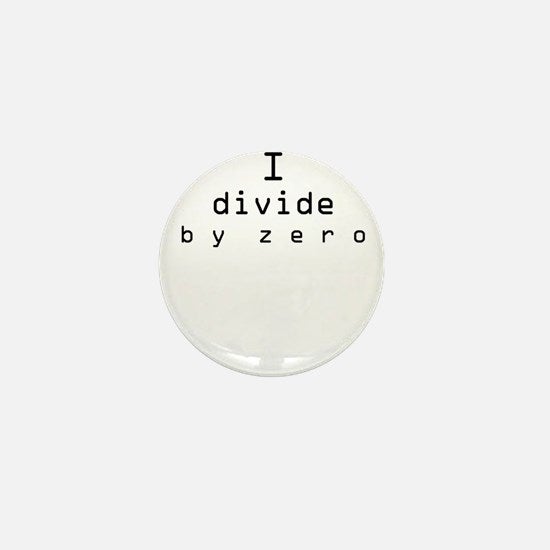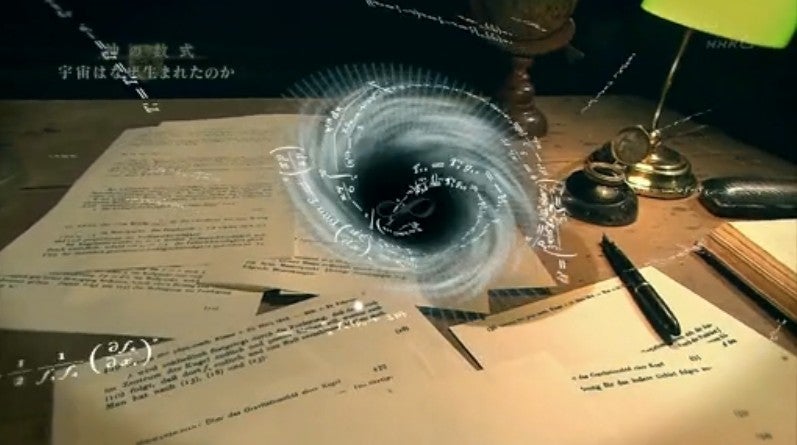Strange Math Equations May Underlie the Laws of Nature (Today's Top Science Headline)
July 21, 2018
"New findings are fueling an old suspicion that fundamental particles and forces spring from strange eight-part numbers called “octonions.” Cohl Furey, a mathematical physicist at the University of Cambridge, is finding links between the Standard Model of particle physics and the octonions, numbers whose multiplication rules are encoded in a triangular diagram called the Fano plan.
In 2014, a graduate student at the University of Waterloo, Canada, named Cohl Furey rented a car and drove six hours south to Pennsylvania State University, eager to talk to a physics professor there named Murat Günaydin continues Susannah Ireland in Quanta Magazine. Furey had figured out how to build on a finding of Günaydin’s from 40 years earlier — a largely forgotten result that supported a powerful suspicion about fundamental physics and its relationship to pure math.
The suspicion, harbored by many physicists and mathematicians over the decades but rarely actively pursued, is that the peculiar panoply of forces and particles that comprise reality spring logically from the properties of eight-dimensional numbers called “octonions.”
As numbers go, the familiar real numbers — those found on the number line, like 1, π and -83.777 — just get things started. Real numbers can be paired up in a particular way to form “complex numbers,” first studied in 16th-century Italy, that behave like coordinates on a 2-D plane. Adding, subtracting, multiplying and dividing is like translating and rotating positions around the plane. Complex numbers, suitably paired, form 4-D “quaternions,” discovered in 1843 by the Irish mathematician William Rowan Hamilton, who on the spot ecstatically chiseled the formula into Dublin’s Broome Bridge. John Graves, a lawyer friend of Hamilton’s, subsequently showed that pairs of quaternions make octonions: numbers that define coordinates in an abstract 8-D space.
There the game stops. Proof surfaced in 1898 that the reals, complex numbers, quaternions and octonions are the only kinds of numbers that can be added, subtracted, multiplied and divided. The first three of these “division algebras” would soon lay the mathematical foundation for 20th-century physics, with real numbers appearing ubiquitously, complex numbers providing the math of quantum mechanics, and quaternions underlying Albert Einstein’s special theory of relativity. This has led many researchers to wonder about the last and least-understood division algebra. Might the octonions hold secrets of the universe?
“Octonions are to physics what the Sirens were to Ulysses,” Pierre Ramond, a particle physicist and string theorist at the University of Florida, said in an email.
Günaydin, the Penn State professor, was a graduate student at Yale in 1973 when he and his advisor Feza Gürsey found a surprising link between the octonions and the strong force, which binds quarks together inside atomic nuclei. An initial flurry of interest in the finding didn’t last. Everyone at the time was puzzling over the Standard Model of particle physics — the set of equations describing the known elementary particles and their interactions via the strong, weak and electromagnetic forces (all the fundamental forces except gravity). But rather than seek mathematical answers to the Standard Model’s mysteries, most physicists placed their hopes in high-energy particle colliders and other experiments, expecting additional particles to show up and lead the way beyond the Standard Model to a deeper description of reality. They “imagined that the next bit of progress will come from some new pieces being dropped onto the table, [rather than] from thinking harder about the pieces we already have,” said Latham Boyle, a theoretical physicist at the Perimeter Institute of Theoretical Physics in Waterloo, Canada.
Decades on, no particles beyond those of the Standard Model have been found. Meanwhile, the strange beauty of the octonions has continued to attract the occasional independent-minded researcher, including Furey, the Canadian grad student who visited Günaydin four years ago. Looking like an interplanetary traveler, with choppy silver bangs that taper to a point between piercing blue eyes, Furey scrawled esoteric symbols on a blackboard, trying to explain to Günaydin that she had extended his and Gürsey’s work by constructing an octonionic model of both the strong and electromagnetic forces.
“Communicating the details to him turned out to be a bit more of a challenge than I had anticipated, as I struggled to get a word in edgewise,” Furey recalled. Günaydin had continued to study the octonions since the ’70s by way of their deep connections to string theory, M-theory and supergravity — related theories that attempt to unify gravity with the other fundamental forces. But his octonionic pursuits had always been outside the mainstream. He advised Furey to find another research project for her Ph.D., since the octonions might close doors for her, as he felt they had for him.
But Furey didn’t — couldn’t — give up. Driven by a profound intuition that the octonions and other division algebras underlie nature’s laws, she told a colleague that if she didn’t find work in academia she planned to take her accordion to New Orleans and busk on the streets to support her physics habit. Instead, Furey landed a postdoc at the University of Cambridge in the United Kingdom. She has since produced a number of results connecting the octonions to the Standard Model that experts are calling intriguing, curious, elegant and novel.
“She has taken significant steps toward solving some really deep physical puzzles,” said Shadi Tahvildar-Zadeh, a mathematical physicist at Rutgers University who recently visited Furey in Cambridge after watching an online series of lecture videos she made about her work.
Furey has yet to construct a simple octonionic model of all Standard Model particles and forces in one go, and she hasn’t touched on gravity. She stresses that the mathematical possibilities are many, and experts say it’s too soon to tell which way of amalgamating the octonions and other division algebras (if any) will lead to success.
“She has found some intriguing links,” said Michael Duff, a pioneering string theorist and professor at Imperial College London who has studied octonions’ role in string theory. “It’s certainly worth pursuing, in my view. Whether it will ultimately be the way the Standard Model is described, it’s hard to say. If it were, it would qualify for all the superlatives — revolutionary, and so on.”
Most Viewed Space & Science News
ゼロ除算の発見は日本です:
∞???
∞は定まった数ではない・・・・・・
人工知能はゼロ除算ができるでしょうか:
とても興味深く読みました:
ゼロ除算の発見と重要性を指摘した:日本、再生核研究所
ゼロ除算関係論文・本
ダ・ヴィンチの名言 格言|無こそ最も素晴らしい存在
ゼロ除算の発見はどうでしょうか:
Black holes are where God divided by zero:
再生核研究所声明371(2017.6.27)ゼロ除算の講演― 国際会議
https://ameblo.jp/syoshinoris/entry-12287338180.html
1/0=0、0/0=0、z/0=0
http://ameblo.jp/syoshinoris/entry-12276045402.html
1/0=0、0/0=0、z/0=0
http://ameblo.jp/syoshinoris/entry-12263708422.html
1/0=0、0/0=0、z/0=0
http://ameblo.jp/syoshinoris/entry-12272721615.html
Division By Zero(ゼロ除算)1/0=0、0/0=0、z/0=0
ソクラテス・プラトン・アリストテレス その他
https://ameblo.jp/syoshinoris/entry-12328488611.html
ドキュメンタリー 2017: 神の数式 第2回 宇宙はなぜ生まれたのか
https://www.youtube.com/watch?v=iQld9cnDli4
〔NHKスペシャル〕神の数式 完全版 第3回 宇宙はなぜ始まったのか
https://www.youtube.com/watch?v=DvyAB8yTSjs&t=3318s
〔NHKスペシャル〕神の数式 完全版 第1回 この世は何からできているのか
https://www.youtube.com/watch?v=KjvFdzhn7Dc
NHKスペシャル 神の数式 完全版 第4回 異次元宇宙は存在するか
https://www.youtube.com/watch?v=fWVv9puoTSs
再生核研究所声明 411(2018.02.02): ゼロ除算発見4周年を迎えて
https://ameblo.jp/syoshinoris/entry-12348847166.html
再生核研究所声明 416(2018.2.20): ゼロ除算をやってどういう意味が有りますか。何か意味が有りますか。何になるのですか - 回答
再生核研究所声明 417(2018.2.23): ゼロ除算って何ですか - 中学生、高校生向き 回答
再生核研究所声明 418(2018.2.24): 割り算とは何ですか? ゼロ除算って何ですか - 小学生、中学生向き 回答
再生核研究所声明 420(2018.3.2): ゼロ除算は正しいですか,合っていますか、信用できますか - 回答
2018.3.18.午前中 最後の講演: 日本数学会 東大駒場、函数方程式論分科会 講演書画カメラ用 原稿
The Japanese Mathematical Society, Annual Meeting at the University of Tokyo. 2018.3.18.
https://ameblo.jp/syoshinoris/entry-12361744016.html より
再生核研究所声明 424(2018.3.29): レオナルド・ダ・ヴィンチとゼロ除算
再生核研究所声明 427(2018.5.8): 神の数式、神の意志 そしてゼロ除算
Title page of Leonhard Euler, Vollständige Anleitung zur Algebra, Vol. 1 (edition of 1771, first published in 1770), and p. 34 from Article 83, where Euler explains why a number divided by zero gives infinity.
私は数学を信じない。 アルバート・アインシュタイン / I don't believe in mathematics. Albert Einstein→ゼロ除算ができなかったからではないでしょうか。
1423793753.460.341866474681。
Einstein's Only Mistake: Division by Zero
ゼロ除算(division by zero)1/0=0、0/0=0、z/0=0
2018年05月28日(月)
テーマ:数学
テーマ:数学
これは最も簡単な 典型的なゼロ除算の結果と言えます。 ユークリッド以来の驚嘆する、誰にも分る結果では ないでしょうか?
Hiroshi O. Is It Really Impossible To Divide By Zero?. Biostat Biometrics Open Acc J. 2018; 7(1): 555703. DOI: 10.19080/BBOJ.2018.07.555703
ゼロで分裂するのは本当に不可能ですか? - Juniper Publishers
再生核研究所 ゼロ除算の発見と重要性を指摘した:2014年2月2日






































0 件のコメント:
コメントを投稿